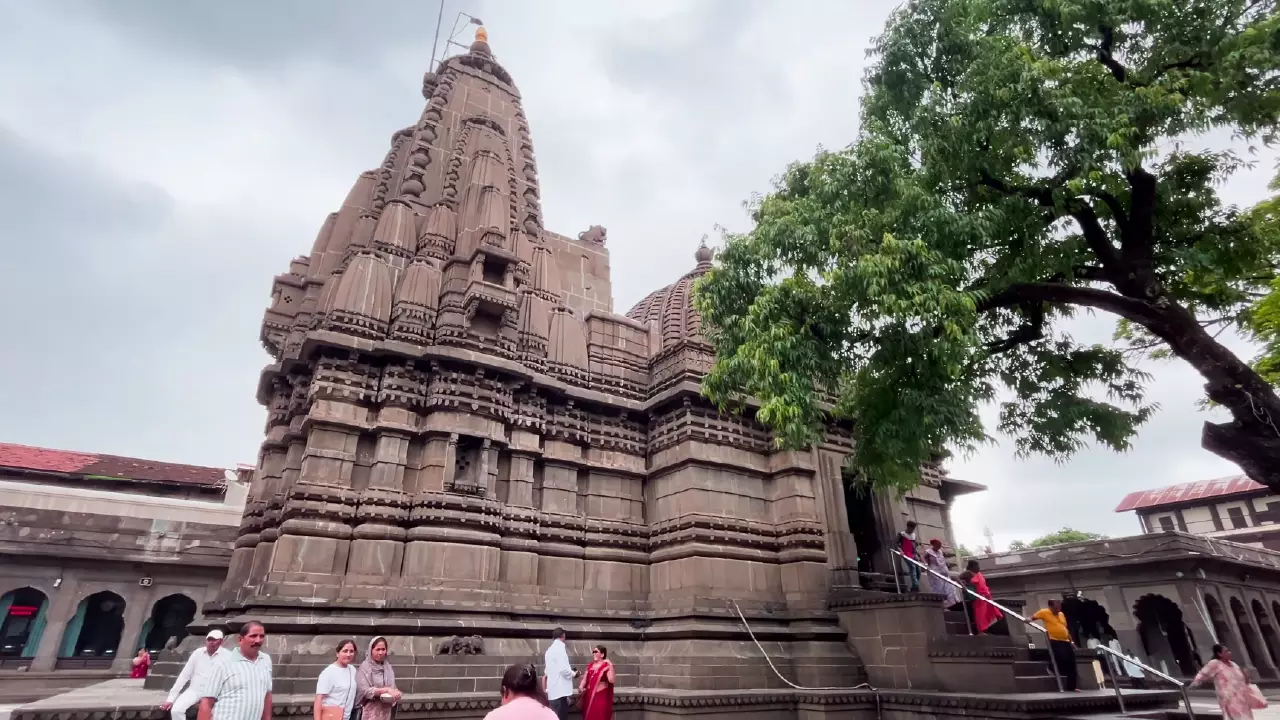The Simhastha of 2015 was a magnificent confluence, a meeting place for the timeless and the contemporary. But beneath the surface of this modern gathering, the spiritual mechanics were as ancient as the Vedas. Remembering the sacred bathing rituals of the Nashik Kumbh Mela 2015 is to recall the precise moments when the veil between the mortal and the divine grew thin, allowing us a glimpse of eternity.
The Cosmic Invitation – Understanding the 2015 Simhastha
Before a single pilgrim arrived, the Mela had already begun in the cosmos. The true host of this gathering is not a person or an organization, but a celestial alignment of immense power. The Nashik Kumbh Mela 2015 was a Simhastha Parva, a term that holds the key to its sanctity.
Simha is Leo, the royal sign of the lion. Stha means to be positioned within. The scriptures, our ancient guides, tell us that the Mela is to be held when Guru, the planet Jupiter, enters this house of Leo. Jupiter is not just a ball of gas in the sky for us; he is Brihaspati, the preceptor of the gods, the embodiment of wisdom, grace, and expansion. His entry into Leo was the signal, the sounding of the divine conch shell across the universe.
But in 2015, he was not alone. He was joined by Surya, the Sun God himself, the soul of our solar system and the king of the heavens. Leo is the Sun’s own home, the sign it rules. Imagine a great and wise teacher visiting the palace of a powerful and radiant king. The energy of such a meeting is what we experienced. This celestial summit focused its potent energies directly upon the Godavari River, transforming her waters from mere H2O into a liquid form of Amrit. This was the cosmic stage upon which the great drama of faith was about to unfold.

The Royal Bath – The Sacred Heartbeat of the Kumbh
While every moment of the Kumbh is charged with spiritual energy, certain days are designated as the Shahi Snan. The word Shahi means ‘royal’. But this royalty has nothing to do with earthly kings or crowns. The royalty being honored here are the spiritual kings of our tradition—the ascetics, the renunciates, the saints, and sadhus of the great Akharas who have given up everything in their pursuit of the ultimate truth.
The tradition of the Shahi Snan dictates that these Akharas have the right to bathe first. Their mass immersion, charged with the collective power of their intense spiritual practices, is believed to further potentize the holy waters. Only after they have bathed do the millions of common pilgrims like you and me take our dip, immersing ourselves in a river that has been blessed by both the heavens and the holy men. The procession of the Akharas to the ghats, known as the Peshwai, is a spectacle of sound, color, and raw spiritual power that is the very heartbeat of the Mela. And during the Nashik Kumbh Mela 2015, this heart beat with a powerful rhythm on three specific days.
The Sacred Shahi Snan Dates of 2015
First Shahi Snan (August 29, 2015): The Dawn of Auspiciousness
The first Royal Bath fell on Shravan Purnima, the full moon of the holy month of Shravan, a day that coincides with Raksha Bandhan. The air was cool and pregnant with the promise of the coming dawn.
- In Trimbakeshwar: My journey began before the first hint of light. The mist clung to the Brahmagiri hills, the sacred source of the Godavari. Here, the atmosphere was primal and electric. This is the domain of the Shaivite Akharas. I watched as the Juna Akhara, the oldest and largest, led the procession. The Naga Sadhus, their bodies covered in sacred ash, moved as one. They are a sight that can be intimidating, but if you look into their eyes, you see a fire that has burnt away all that is trivial. Their thunderous cry of “Har Har Mahadev!” seemed to shake the very foundations of the earth as they charged into the Kushavarta Kund. It was a moment of absolute, untamed spiritual force.
- In Nashik: Later that morning, I was in Nashik, where the mood was entirely different. Here, the air was filled not with a primal roar, but with the sweet melodies of bhakti, or devotion. This is the seat of the Vaishnava Akharas. Their procession to the Ramkund was a celebration of divine love. Chants of “Jai Shri Ram!” and “Radhe Krishna!” filled the streets. The Vairagi sadhus, their foreheads marked with the symbols of Vishnu, moved with a joyful grace. Their immersion in the Ramkund, where Lord Rama himself bathed, was an act of loving surrender. Witnessing both events during the Nashik Kumbh Mela 2015 was to experience the two primary paths to the divine: the path of ascetic power and the path of loving devotion.
Second Shahi Snan (September 13, 2015): The Great Confluence
This was the main bathing day, the absolute peak of the Mela. It fell on Bhadrapad Amavasya, the new moon day, a time considered highly potent for spiritual practices and for honoring one’s ancestors. The crowds were at their densest; it felt as if all of Bharat had descended upon the banks of the Godavari. From a bridge, I looked down and saw not a crowd of people, but a single living organism, a river of souls flowing towards the larger river of water.
The Peshwai processions on this day were displays of unimaginable grandeur. The Mahamandaleshwars, the spiritual heads of the Akharas, sat atop elephants and silver chariots, their serene faces a stark contrast to the ecstatic chaos around them. The sounds of drums, conch shells, and a million voices chanting in unison created a symphony of faith. The charge of the Naga Sadhus in Trimbakeshwar was even more intense, and the devotional dances of the Vairagis in Nashik were even more ecstatic. This was the most significant day of the Nashik Kumbh Mela 2015, a day when the spiritual energy was so palpable you could almost taste it.
Third Shahi Snan (September 18, 2015): A Sacred Culmination
The final Royal Bath was held on Rishi Panchami. This day is traditionally set aside to honor the seven great primordial sages, the Saptarishis, who are the custodians of Vedic wisdom. There was a different quality to this day. The explosive energy of the main Shahi Snan had mellowed into a deep, fulfilling sense of peace.
It was the last great sacred bath for the Akharas, a final immersion in the nectar of the Godavari before the Mela would begin to wind down. The processions were still glorious, but they felt less like a charge and more like a graceful conclusion. For the sadhus and the pilgrims, it was a time of gathering the blessings, of filling one’s soul with the grace of the Simhastha to carry back into the world. It was a day of profound gratitude, a divine seal placed upon the spiritual efforts of millions. This final Shahi Snan of the Nashik Kumbh Mela 2015 was a poignant and beautiful farewell.

The Spiritual Resonance of the Holy Dip
These dates were far more than a schedule. They were cosmic appointments. To bathe in the Godavari on these specific days, at these astrologically perfected moments, is a profound act. The scriptures tell us it washes away the karma of not just this life, but of many past lives. Stepping into that water, you are not just an individual; you are a link in a chain of generations, and your dip brings merit to your ancestors.
The chaos of the crowds, the cacophony of sounds, it all fades away the moment you dip your head under the water. There is a moment of absolute silence, of profound connection. When you emerge, the world seems fresh and new. You feel lighter, cleansed from within. It is a spiritual rebirth.
The memory of the Nashik Kumbh Mela 2015 is a reminder that our faith is a living, breathing thing. It is written in the stars, flows in our sacred rivers, and culminates in the collective heartbeat of millions of devotees gathered in one place, at one time, for one purpose: to touch the face of God. The tents have long been packed away, and the pilgrims have returned to their worldly lives, but the grace of those days remains, a silent, powerful presence in the soul of all who were there.

